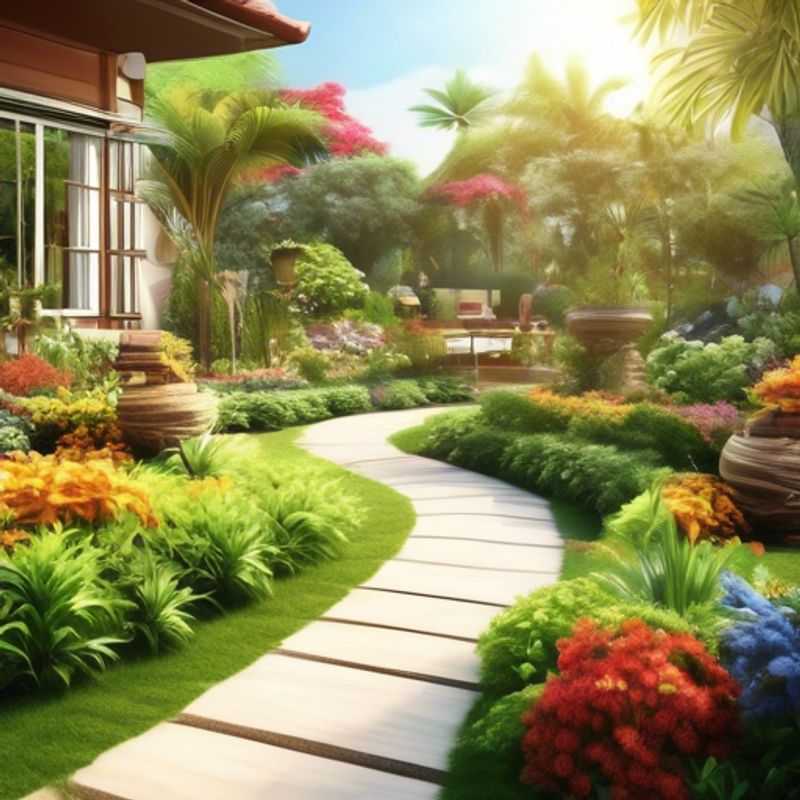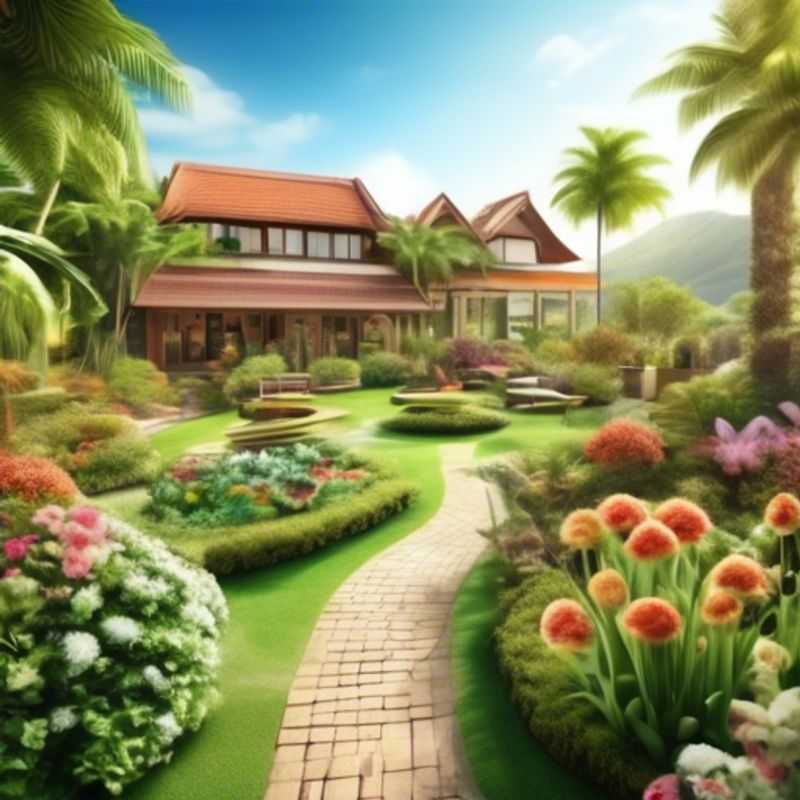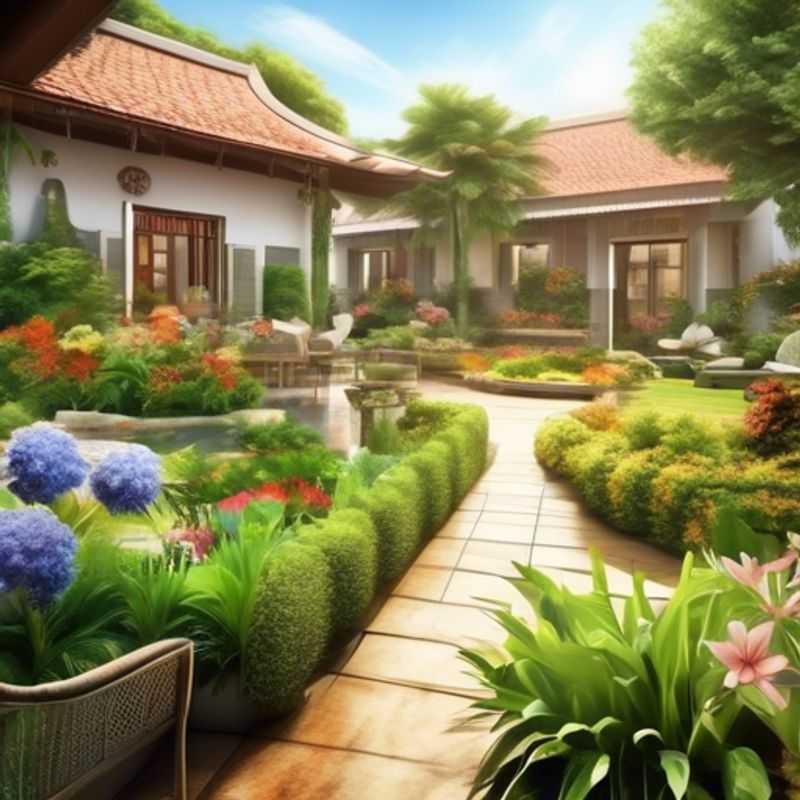Top 4 Must-Knows Before Embarking on Your Home Garden Journey

Measure Your Space, Research Your Climate, Budget Wisely, and Know Your Local Regulations:
Ah, the joy of a home garden! It's a sanctuary of green, a space for relaxation, and a source of fresh, delicious produce. But before you dive into this delightful world, there are a few crucial things to consider. Let me share my engineer's perspective, infused with a touch of horticultural curiosity.
Firstly, measure, measure, measure!

Measure Twice, Plant Once: Mastering Garden Space Planning
Accurately measuring your garden space is crucial for ensuring your home garden items fit properly. Before you head to the store, grab a tape measure and notebook. Begin by walking around the perimeter of your garden, measuring the length and width of the area. Don't forget to consider any existing features such as trees, fences, or structures that might limit your space.
Important tip: Sketch a rough plan of your garden on paper, noting the measurements of each section. This will help you visualize the placement of your garden items.
Next, consider the height of your garden items. Measure the height of any structures you plan to use, like trellises or raised beds. Make sure they fit comfortably within your garden space, leaving enough room for sunlight and air circulation.
Important Tip: If you're unsure about the dimensions of your garden items, check the product specifications online or visit the store to get a visual understanding of their size.
Finally, consider the movement around your garden. You'll want to ensure enough space for walking, watering, and tending to your plants. Leave ample room for pathways, especially if you have a large garden.

Matching Plants to Your Patch: Understanding Climate and Soil
Understanding the climate and soil conditions of your area is crucial for selecting the right plants and tools for your garden. Climate refers to long-term weather patterns, including temperature, rainfall, and humidity, while soil refers to the composition of the earth in your garden. This information can be gathered through online resources, local gardening centers, or agricultural extension offices. Local gardening centers and agricultural extension offices often provide free resources and advice on suitable plants and tools.
Climate factors like temperature and rainfall influence the types of plants that thrive in your area. Soil conditions like pH, drainage, and nutrient levels affect plant growth. Researching both climate and soil conditions helps ensure your plants have the best chance of survival and flourishing.
For example, if you live in an area with hot, dry summers, you might choose drought-tolerant plants and tools designed for efficient watering. Conversely, if your area experiences heavy rainfall, you may need drainage solutions and plants that can tolerate wet conditions. Consider using resources like online plant databases to find suitable options based on your location's climate and soil type.
By carefully considering your area's climate and soil conditions, you can make informed decisions about plant selection and tool choices, leading to a thriving and sustainable garden.

Budgeting for the Long Haul: Initial Purchase and Ongoing Maintenance Costs
Determining the right budget for your project is a crucial step in ensuring its success. It's essential to factor in both the initial purchase cost and ongoing maintenance expenses.
Initial Purchase Costs encompass the price of the hardware, software, and any other necessary components. Consider these factors:
Ongoing Maintenance Costs are crucial and often overlooked. These include:
Software Updates & Licensing Fees: Software needs regular updates to fix bugs, enhance security, and add new features. Licensing fees are often required for continued use.
Hardware Maintenance: Hardware components can wear down over time. Factor in costs like repairs, replacements, and preventative maintenance.
Support and Training: You may require ongoing support from technical experts or training for your team to effectively use and manage your system.
Security Measures: Investing in security software, firewall maintenance, and regular security audits is crucial to protect your data and systems.
Power and Connectivity: Consider the cost of electricity and internet access for your equipment.
By carefully budgeting for both initial purchase and ongoing maintenance, you can avoid unpleasant surprises and ensure your project remains functional and cost-effective.

Dig In: Understanding Local Regulations for Your Home Garden
Before you start digging in the dirt, it's crucial to understand the rules of the game. Familiarize yourself with local regulations and permits required for home gardening. These regulations can vary depending on where you live, and ignoring them could lead to fines or even legal issues.
Check with your local city or county government to see what's allowed in your area. They may have restrictions on the types of plants you can grow, the size of your garden, or even the use of pesticides. Some municipalities might even have specific guidelines on composting and water usage.
Consider obtaining a permit if required. Some places require permits for building raised beds, installing irrigation systems, or even starting a small-scale food production operation. These permits often involve a small fee.
Research any potential fees. Some cities may charge fees for inspections, water connections, or even for obtaining the gardening permit itself. Factor these fees into your budget when planning your garden.
By being informed and proactive, you can ensure your gardening journey is smooth and enjoyable. Remember, a little effort up front can save you headaches down the line.
